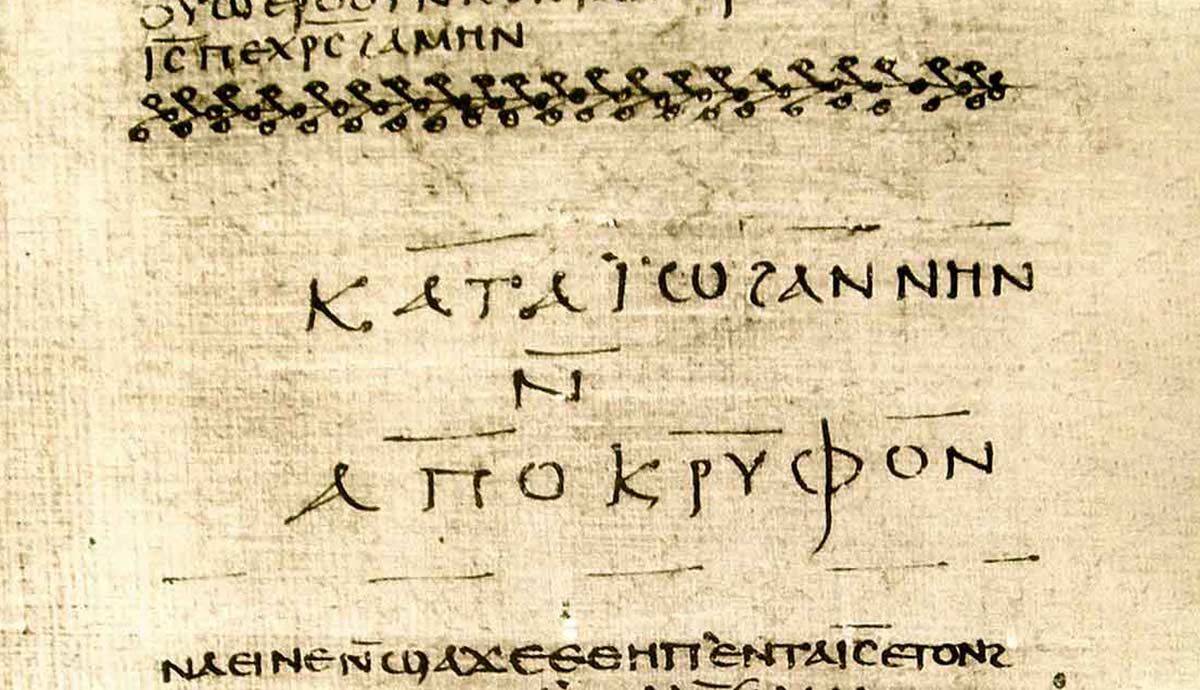
No original manuscript of any Christian Bible book is available to us today. We only have copies of copies and there are literally thousands of variants in these manuscripts. With inconsistencies in manuscripts adding up to about 400,000 cases, how do we know that the Bible has not been corrupted?
What Does “Corrupted” Mean in This Context?

To answer the question “Has the Christian Bible been corrupted?” one must start with some background. Firstly, when you use the term “the Bible,” you could be referring to the Protestant, Catholic, or Orthodox canon of the Bible. These churches all use different canons.
The word canon comes from the Greek word “kanon” which means reed or measurement and it refers to the compilation of books that are considered authoritative and that are used as the measuring stick for that faith group. The Protestant canon recognizes 66 books, the Catholic canon has 73, and the Orthodox 81. The disparity is due to the Protestants excluding the deuterocanonical books of the Old Testament as illegitimate, categorizing them as apocryphal books, as the Jews did. We will consider the Protestant canon in this article.
Secondly, the word corrupted means to “change or debase by making errors or unintentional alterations.” Corruption, in this case, implies significant deterioration of the text that would distort the message and meaning of the text. Such changes should be so egregious that they modify the significance of the text.
Between 3,400 and 1,900 years have passed since various authors wrote the books that now constitute the Christian Bible. The authors of the 39 Old Testament books penned it from between approximately 1400 BCE to 400 BCE. The authors of the 27 books of the New Testament wrote them between 40 CE and 90 CE. The compilation of the canon concluded hundreds of years later. The oldest known list of books in the Christian Bible appears in the Paschal Letters of Athanasius of Alexandria from 367 CE. The church fathers had access to versions of the Bible we do not have access to today, and they probably had access to some original manuscripts.

Between the time of their writing and our day, all the original manuscripts have been lost, most likely they no longer exist. The versions we do have are copies, or copies of copies, and contain some differences. These differences often give rise to claims of corruption or change.
The view of the inerrancy of the Christian Bible only applies to the original manuscripts, not to the copies of the manuscripts. Though the scribes who copied the manuscripts were well trained and did their utmost to reproduce or translate documents as accurately as possible, replication of the Scriptures was not perfect. Scholars have identified many errors and variants in the large volume of manuscripts available today. These errors gave rise to minor differences in text traditions as scribes tasked to replicate manuscripts copied errors contained in them. Most of these differences are simple spelling variants (such as different spellings of a name), inverted words (like “Christ Jesus” and “Jesus Christ”), or an easily identified missing word.
Over 99 percent of the bible is above question, with no variants detected. Of the remaining portion, less than one percent reflects that variation, none of which jeopardizes any doctrinal teaching or command. The Bible we have today is therefore not compromised. The Dead Sea Scrolls are evidence of this fact.
The Dead Sea Scrolls

The Dead Sea Scrolls are a collection of Jewish documents written in Hebrew, Aramaic, and Greek and they cover around 972 separate works. A shepherd boy discovered the first of these scrolls in 1947. During the next decade, archaeologists discovered many more manuscripts in almost a dozen caves close to the original find. Among the manuscripts and fragments were parts of every book in the Hebrew Bible except the Book of Esther, all created nearly one thousand years earlier than any previously known biblical manuscripts. These manuscripts ranged from the third century BCE to around 68 CE and remained well preserved in clay pots in the dry climate of the desert caves at Qumran, a village about twenty miles east of Jerusalem on the northwest shore of the Dead Sea.
The Dead Sea manuscripts were nearly identical in content to copies from the 3rd century CE. The similarity shocked scholars who had theorized that significant changes would likely have occurred. Scientists could no longer deny the accuracy of the transmission of the Christian Bible. Furthermore, no undiscovered Bible books that may have been “lost” were found among the Dead Sea Scrolls, although the find contained some apocryphal books. Most of the scrolls, however, were copies of the Hebrew Old Testament.
Though ancient language scholars have detected minor variances in spelling, some omissions, and some additions in Bible manuscripts over time, they were minor and of no real significance. There was no evidence of any systematic editing or manipulation of the content. There are more than 5,000 copies of New Testament manuscripts, which makes the detection of variances and even tracing the origin of variations possible.
How Do We Know the Bible We Have Today is Reliable?

The sheer number of available manuscripts allows theologians and literary experts to reconstruct the original texts. The oldest copies we have today also have minor differences but these do not influence the core content used to construct teaching or doctrine.
Scholars ascribe the approximately 400,000 variants to the vast number of manuscripts available. When considering that a single difference in spelling constitutes a variant, that number is not large. Some scholars regard the variants as good because it allows them to trace the changes and help them reconstruct the originals. The more than 5,000 oldest manuscripts are all in Greek and do not include Aramaic, Syriac, and other translations. The oldest New Testament manuscripts date to around 125-175 CE, not long after the authors penned the original versions. The Bible is by far the most reliable ancient text in terms of the number of copies and critical analysis of variations and source validity.

The fact that the manuscripts available today preceded the printing press and were therefore subject to human error when scribes replicated them is noteworthy because they still have less than one percent variations between them, a testament to the preservation of the original content. More than 99 percent of the manuscript variants are not meaningful and viable differences, and 70% of the variants are neither meaningful nor viable and are simple spelling errors that scholars detected with ease.
Of the remaining variants, some are meaningful and others viable. “Meaningful variants” refer to anomalies that change the meaning of the text, for example, a variant that changes its meaning but is not a viable option, such as a word that does not fit the language of the time and indicates a later addition. “Viable variants” refer to plausible differences but make no change to the meaning of the text. These include different spellings of names or places. Both spellings may be possible but do not modify the meaning of the text. The only variants of concern are those that are both meaningful and viable.
The Most Significant Manuscript Difference

The most significant difference between manuscripts is arguably the ending of the Gospel of Mark. This gospel was the first written and is also the shortest of the four gospels by a considerable measure. Many people are not aware that the ending of Mark was a later addition to the gospel.
Most scholars agree that the Gospel of Mark ends with verse eight, based on the two oldest manuscripts of the book discovered thus far. This original version had no account of Jesus interacting with anyone after His resurrection. It is an abrupt ending that leaves the story open-ended and seemingly incomplete. Verses nine to 20 were later additions that aimed to resolve the abrupt ending with a more appropriate one.

The twelve added verses have no impact on any doctrine. It adds no information that is not taught elsewhere in Scripture. For this reason, even this identified addition does not constitute a corruption of the text, though it does show some modification to the original. Scholars have identified the changes and studied and detailed them in many papers to expose the implications they could have. No scholar has ever considered it as a corruption of the original. Today, we can only speculate about the motivation for the addition, but it was most likely an attempt to fix the abruptness with which the original version ends.
The Gospel of Mark is known for its unpolished style and it lacks references to the virgin birth in its opening chapters. It is a rough, unsophisticated work that educated scribes likely considered incomplete. A scribe translating it most likely added the last verses to complete the work.
Does this Mean All Versions of the Bible are Equally Reliable?

No. There are different approaches to Bible translation. We can plot Bible translations on a spectrum that ranges from literal to dynamic to paraphrase.
A literal translation seeks to remain as true to the words of the original manuscript as possible. These words may not convey the same meaning in another language as in the original. Examples of literal translations are the King James Version, the American Standard Version, and the New Revised Standard Version.
A dynamic translation seeks to convey the author’s thoughts while remaining faithful to the original text as far as possible. These translations attempt to balance accuracy and approachability. They are thought-for-thought translations such as the Bible in Basic English, the New International Version, and the New Living Translation.
A paraphrased translation aims to transmit the general idea of the text with little regard for the original. Paraphrase translations are easy to read. The Good News Bible, The Living Bible, and The Message are examples of this approach. They are the least reliable for academic study of the Bible.
Conclusion

The narrative that we have corrupted the Bible does not seem to be supported by the evidence. Scholars have detailed, studied, and written in-depth on the variations and do not consider them corruptions because they do not significantly impact the meaning of the text. There is no distortion of the message of the Christian Bible intentionally or by mistake. The variants that may have been problematic because they are meaningful and viable amount to less than one percent of all variants and make no doctrinal difference whatsoever. Considering that only one percent of the text has variants, claims of corruption based on changes to the text seem to be making a mountain out of a molehill.










